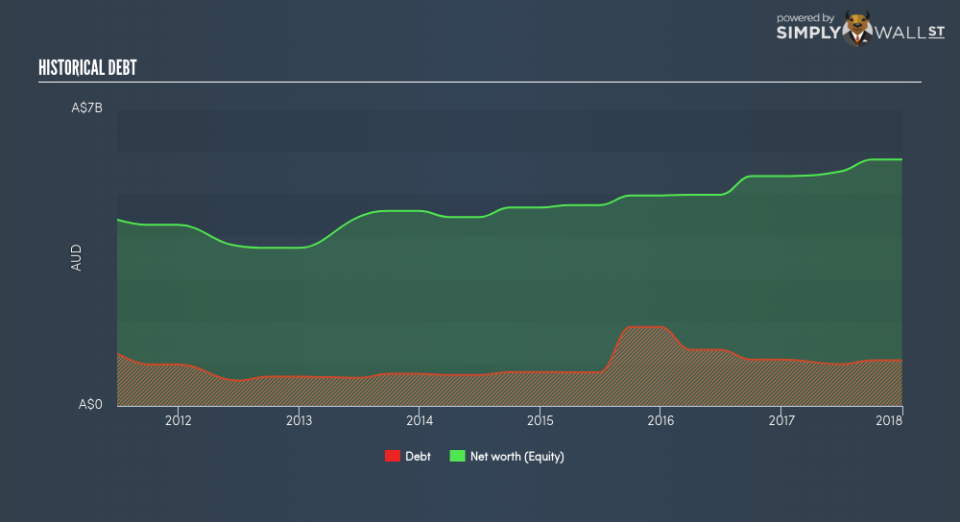Why BlueScope Steel Limited (ASX:BSL) Is A Financially Healthy Company

Small-caps and large-caps are wildly popular among investors; however, mid-cap stocks, such as BlueScope Steel Limited (ASX:BSL) with a market-capitalization of AU$9.48b, rarely draw their attention. However, generally ignored mid-caps have historically delivered better risk-adjusted returns than the two other categories of stocks. Let’s take a look at BSL’s debt concentration and assess their financial liquidity to get an idea of their ability to fund strategic acquisitions and grow through cyclical pressures. Note that this information is centred entirely on financial health and is a top-level understanding, so I encourage you to look further into BSL here. Check out our latest analysis for BlueScope Steel
How does BSL’s operating cash flow stack up against its debt?
BSL has shrunken its total debt levels in the last twelve months, from AU$1.33b to AU$985.20m – this includes both the current and long-term debt. With this debt repayment, BSL currently has AU$753.00m remaining in cash and short-term investments for investing into the business. On top of this, BSL has produced cash from operations of AU$1.13b in the last twelve months, resulting in an operating cash to total debt ratio of 114.94%, meaning that BSL’s operating cash is sufficient to cover its debt. This ratio can also be a sign of operational efficiency as an alternative to return on assets. In BSL’s case, it is able to generate 1.15x cash from its debt capital.
Does BSL’s liquid assets cover its short-term commitments?
With current liabilities at AU$2.45b, the company has been able to meet these obligations given the level of current assets of AU$3.87b, with a current ratio of 1.58x. Usually, for Metals and Mining companies, this is a suitable ratio since there is a bit of a cash buffer without leaving too much capital in a low-return environment.
Does BSL face the risk of succumbing to its debt-load?
BSL’s level of debt is appropriate relative to its total equity, at 18.53%. This range is considered safe as BSL is not taking on too much debt obligation, which may be constraining for future growth. We can check to see whether BSL is able to meet its debt obligations by looking at the net interest coverage ratio. A company generating earnings before interest and tax (EBIT) at least three times its net interest payments is considered financially sound. In BSL’s, case, the ratio of 15.06x suggests that interest is comfortably covered, which means that debtors may be willing to loan the company more money, giving BSL ample headroom to grow its debt facilities.
Next Steps:
BSL’s high cash coverage and low debt levels indicate its ability to utilise its borrowings efficiently in order to generate ample cash flow. In addition to this, the company will be able to pay all of its upcoming liabilities from its current short-term assets. I admit this is a fairly basic analysis for BSL’s financial health. Other important fundamentals need to be considered alongside. I recommend you continue to research BlueScope Steel to get a more holistic view of the stock by looking at:
Future Outlook: What are well-informed industry analysts predicting for BSL’s future growth? Take a look at our free research report of analyst consensus for BSL’s outlook.
Valuation: What is BSL worth today? Is the stock undervalued, even when its growth outlook is factored into its intrinsic value? The intrinsic value infographic in our free research report helps visualize whether BSL is currently mispriced by the market.
Other High-Performing Stocks: Are there other stocks that provide better prospects with proven track records? Explore our free list of these great stocks here.
To help readers see pass the short term volatility of the financial market, we aim to bring you a long-term focused research analysis purely driven by fundamental data. Note that our analysis does not factor in the latest price sensitive company announcements.
The author is an independent contributor and at the time of publication had no position in the stocks mentioned.

 Yahoo Finance
Yahoo Finance 
